I meant to recommend a new holiday-themed movie for you this week – but when I looked at what has come out this year, I couldn’t find anything promising.
And so, I made a list of my 10 all-time favorites… and realized that all but two of them were produced in the 1930s and 1940s. The most recent one, White Christmas, made its debut 56 years ago! (I’m going to get the grandkids to watch a few of them.)
If you’re interested in a nostalgic bit of Yuletide storytelling, I’ve put them in order of my preference, backed up with a bit of research that Amaru did on what the critics had to say about them.
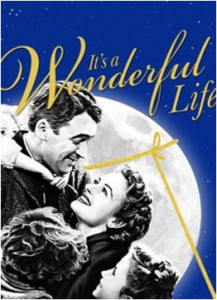
It’s a Wonderful Life (1936)
Directed by Frank Capra
Starring James Stewart and Donna Reed
From Empire: “Although peppered with colourful, sharply drawn characters, this is Stewart’s movie, instantly loveable as a small town dreamer who sacrifices everything for others. His journey to despair and back warms the cockles like little else.”
From The Guardian: “The film is gripping enough simply with the telling of George’s life story. A genuine American classic.”
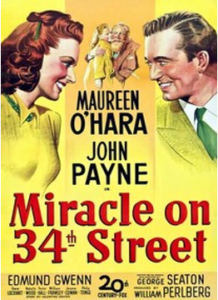
Miracle on 34th Street (1947)
Directed by George Seaton
Starring Maureen O’Hara, John Payne, Edmund Gwenn, and Natalie Wood
From BBC: “A clever and deeply original story that remains true and confident in direction while delivering considerable charm all the while.”
From The New York Times: “[Let us] heartily proclaim that it is the freshest little picture in a long time, and maybe even the best comedy of this year.”
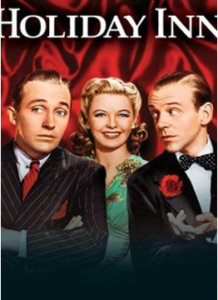
Holiday Inn (1942)
Directed by Mark Sandrich
Starring Bing Crosby, Fred Astaire, and Marjorie Reynolds
From Emanuel Levy: “One of Bing Crosby and Fred Astaire’s most enjoyable and most commercially popular musicals, featuring Irving Berlin’s iconic, Oscar-winning ballad, White Christmas.”
From Time Magazine: “Crosby’s easy, casual banter is just the right foil for Astaire’s precision acrobatics, his wry, offbeat humor.”
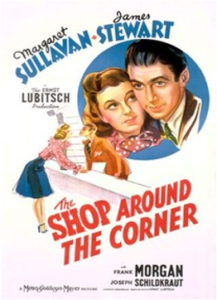
The Shop Around the Corner (1940)
Directed by Ernst Lubitsch
Starring Margaret Sullavan and James Stewart
From Emanuel Levy: “My favorite Christmas film, this deliciously delicate, multi-nuanced romantic comedy is one of Lubitsch’s very best films, flawlessly acted by Jimmy Stewart at his peak, the sublime Margaret Sullavan, and the rest of the large ensemble.”
From The Guardian: “Lubitsch demonstrates that romantic comedies, like popcorn, can be enjoyed salty as well as sweet.”
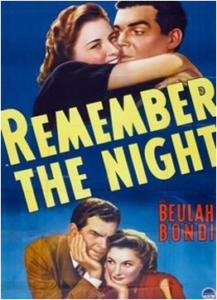
Remember the Night (1940)
Directed by Mitchell Leisen
Starring Barbara Stanwyck and Fred MacMurray
From TV Guide: “You’d have to be a grump not to like this funny, sentimental blend of pathos, drama, and zaniness.”
From The New York Times: “Perhaps this is a bit too early in the season to be talking of the best pictures of 1940; it is not too early to say that Paramount’s nomination is worth considering.”
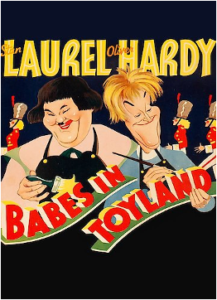
Babes in Toyland (1934)
Directed by Gus Meins and Charley Rogers
Starring Stan Laurel, Oliver Hardy, and Charlotte Henry
From The New York Times: “The film is an authentic children’s entertainment and quite the merriest of its kind that Hollywood has turned loose on the nation’s screens in a long time.”
From The Chicago Tribune: “It’s been many a long day since I’ve had so much pure (and I MEAN pure!) fun as I had watching this picture.”
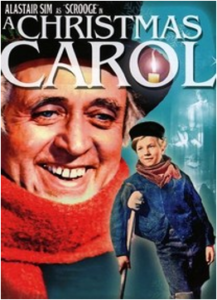
A Christmas Carol (1951)
Directed by Brian Desmond Hurst
Starring Alastair Sim, Mervyn Johns, and Michael Hordern
From The New York Times: “What we have in this rendition of Dickens’ sometimes misunderstood Carol is an accurate comprehension of the agony of a shabby soul.”
From Entertainment Weekly: “Other Christmas Carols need not apply.”
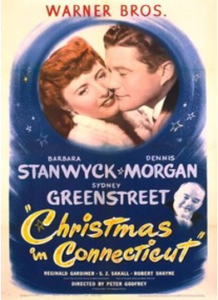
Christmas in Connecticut (1945)
Directed by Peter Godfrey
Starring Barbara Stanwyck, Dennis Morgan, and Sydney Greenstreet
From Combustible Celluloid: “Barbara Stanwyck uses every acting muscle in her body to redeem this silly holiday romance.”
From Chicago Reader: “Frolicsome in an artificially hearty sort of way.”
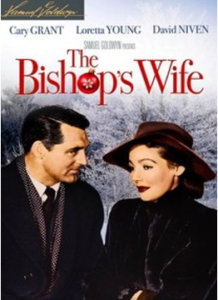
The Bishop’s Wife (1948)
Directed by Henry Koster
Starring Cary Grant, Loretta Young, and David Niven
From The New York Times: “Whatever you make of the minor miracles performed along the way, there’s no trouble believing that Cary would fall for Loretta or that anybody would fall for Cary.”
From TV Guide: “A warm, sentimental comedy-fantasy.”

White Christmas (1954)
Directed by Michael Curtiz
Starring Bing Crosby and Danny Kaye
From TV Guide: “Though it’s not as satisfying as it might have been, it still boasts great stars and catchy songs in addition to a love story, and is a perennial holiday favorite.”
From Times (UK): “White Christmas is the cinema equivalent of an inappropriate festive snog under the mistletoe – you know you probably shouldn’t enjoy it but you just can’t help yourself.”
Oh… and here are two we discovered that I’d never seen. (I’ll be watching them by myself.)
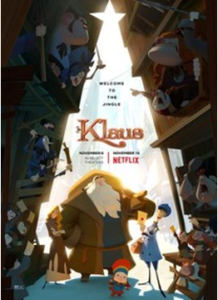
Klaus (2019)
Directed by Sergio Pablos
Starring Jason Schwartzman (voice) and J.K. Simmons (voice)
From New York Magazine/Vulture: “It’s awkward and weird, and yet all that awkwardness and weirdness give it personality and charm and a freewheeling, nonsensical quality that feels refreshing.”
From The Guardian: “An old-school, PG-rated animation, encompassing some digital wizardry, but generally clinging to a nostalgic, hand-drawn look, with a late-blooming Christmas theme.”
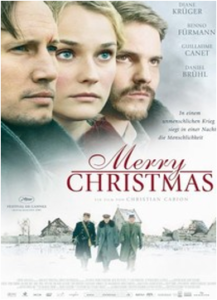
Joyeux Noel (2006)
Directed by Christian Carion
Starring Diane Kruger as Anna Sörensen and Daniel Brühl
From Globe and Mail: “Unfolding slowly, then building in momentum like the hymns themselves, this entire sequence is tremendously affecting.”
From Time Out: “It’s a respectful, sobering tribute to the flickering of humanitarian spirit amid the darkest days of conflict and, as such, surely a Christmas film for the ages.”
 MarkFord
MarkFord














